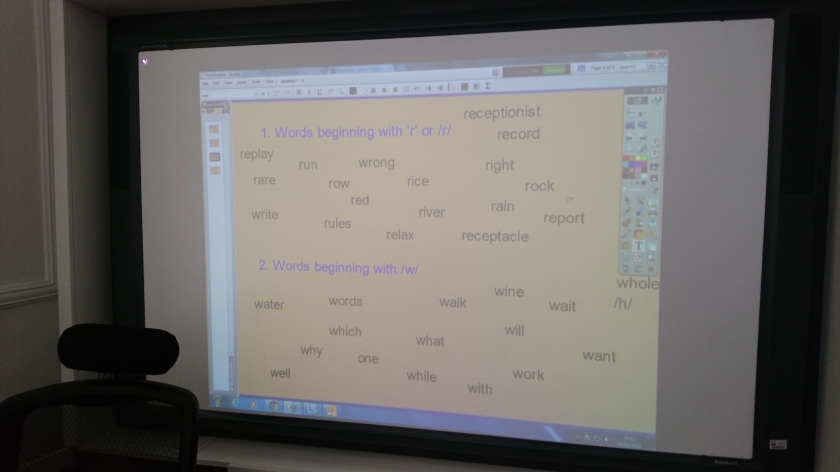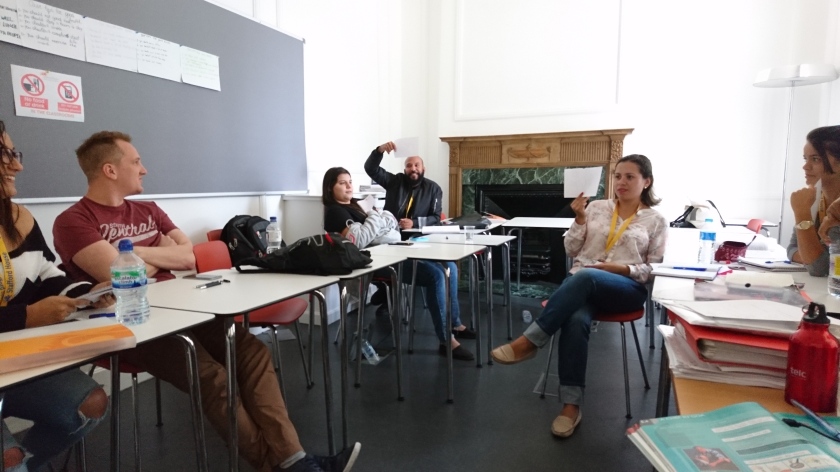I’ve been teaching mostly Brazilian A1 students this summer, and although I speak no Portuguese, fortunately for me their language has many similarities to Italian. I’ve found that this has helped immensely for eliciting and checking understanding (but using the students’ L1 will be the subject of another post :-)). One feature which is different from Italian is that they have problems with the /w/ and /r/ sounds.
We were talking about food and they were trying to say: medium rare/medium well. I wasn’t sure which one they were saying. For Italians the problem would have been the ‘bear’ vowel sound in ‘rare’, but when we concentrated on this they got it. So I investigated further.
Here are the steps I took:
- Identifying the problem sounds and the need for working on them
If you work in a monolingual situation or you speak the learners’ L1, you will already be prepared for this, but I wasn’t. I numbered the target vocabulary:
- medium rare 2. medium well
I read them individually and asked the students to give me the corresponding number. I found that half of the class were giving a wrong answer.
I went around the class and asked them to say one of the phrases, and I told them which one I thought they were saying. They were surprised when they realised that I often couldn’t understand the difference. I told them that what I was hearing was something between the two, so something like ‘medium where’!
I noticed that they tended to:
- aspirate the /r/ into a /h/, and were trying to form the sound only with their lips, not with their top teeth.
- not use the rounded lip position for /w/. (My Brazilian friend tells me that /w/ is never found at the beginning of words in Portuguese)
- not pronounce the /l/ (again, my L1 expert informs me that in Brazilian Portuguese /l/ is mute).
2. Focus on two sounds
I decided to focus on the /w/ and /r/ sounds. I modelled them, showing the right mouth position. They started to feel/understand the difference between my production and theirs. The problem of course is that in spontaneous speech this goes out of the window, so they need a lot of practice first.
I asked the students to brainstorm words beginning with the two sounds. This is what they came up with:

I then asked them to write a silly mini-story in pairs using the words from the board. Here’s one of their stories:
One day a receptionist asked me what I do. ‘I am a rock star. I write music and record video clips. In my free time I like relaxing, reading and running. My favourite colours are red and white. I like rainy days and winter.’
3. Practice 1 – closed pairs
When they’d finished they stories I asked them to underline all the /r/ sounds in one colour, and the /w/ sounds in another. Then they had to practice reading the story in their pairs with the correct pronunciation.
4. Practice 2 – open class
Now the students read their story to the whole class. The other groups had to listen for the /r/ and /w/ sounds and hold up a piece of paper corresponding to the right sound when they heard it.

A footnote- I have to give credit to my old boss from Prato for part of this activity. Her name was Sophie. Unfortunately she’s no longer with us. Thank you for your inspiration Sophie!
